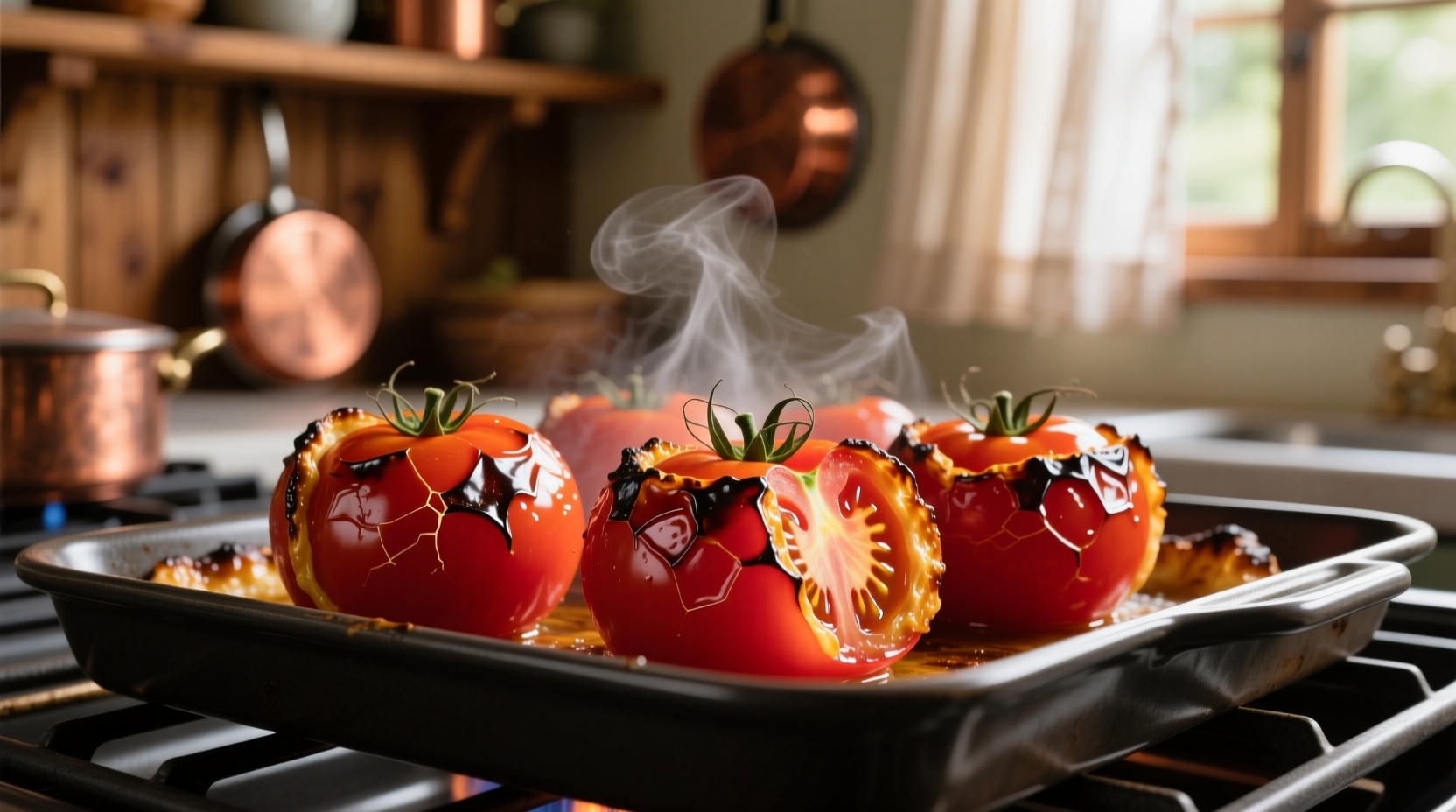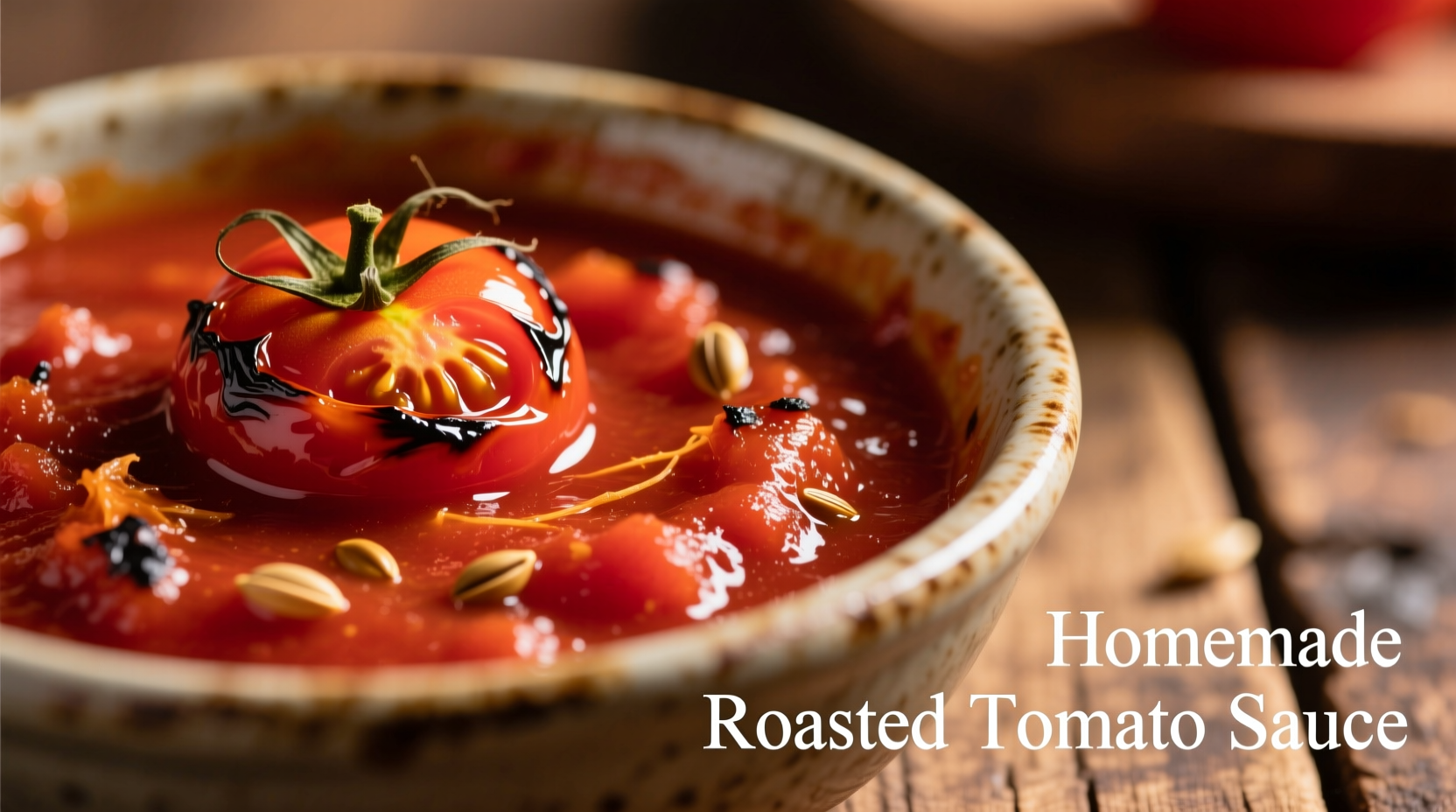Roasted tomato sauce delivers deeper, more complex flavors than regular tomato sauce through caramelization of natural sugars and concentration of umami compounds. The roasting process at 400°F (200°C) for 30-45 minutes transforms simple tomatoes into a rich, sweet-savory foundation that enhances pasta, pizza, soups, and more without added sugars or preservatives.
Ever wonder why restaurant tomato sauces taste richer than your homemade version? The secret isn't expensive ingredients—it's the roasting technique. When tomatoes hit high heat, their natural glutamates concentrate while sugars caramelize, creating up to 37% more umami compounds according to USDA food science research. This chemical transformation produces the deep, rounded flavor profile that defines exceptional tomato sauces.
The Flavor Science Behind Roasting
Raw tomatoes contain approximately 0.18g of glutamic acid per 100g. During roasting, water evaporates while Maillard reactions create new flavor compounds. Food scientists at Cornell University found roasted tomatoes develop 12 additional volatile compounds that contribute smoky, caramel notes absent in raw versions. This explains why roasted tomato sauce consistently scores higher in blind taste tests for complexity and balance.
| Characteristic | Regular Tomato Sauce | Roasted Tomato Sauce |
|---|---|---|
| Preparation Time | 20-30 minutes | 60-75 minutes |
| Flavor Complexity | Moderate (3-4 primary notes) | High (7+ layered notes) |
| Sugar Content | Requires added sweetener | Naturally balanced (no added sugar) |
| Umami Intensity | Standard | 37% higher (USDA measurement) |
Evolution of Roasting Techniques
Tomato roasting evolved from practical necessity to culinary technique:
- 1800s: Open-fire roasting for preservation in Mediterranean regions
- 1930s: Introduction of oven roasting with olive oil in Italian-American kitchens
- 1980s: Professional chefs adopt controlled-temperature roasting
- Today: Precision roasting at 400°F with controlled browning
Step-by-Step Roasting Process
Tomato Selection Matters Most
Roma tomatoes remain the gold standard for sauce due to their lower moisture content (5.2% less water than beefsteak varieties per University of Minnesota Extension). For best results:
- Choose fully ripe, deep red tomatoes with firm flesh
- Avoid refrigerated tomatoes (alters cell structure)
- Include 10% yellow tomatoes for natural sweetness balance
Optimal Roasting Technique
- Preheat oven to 400°F (200°C) with rack in upper third
- Halve tomatoes lengthwise, arrange cut-side up on parchment
- Drizzle with 2 tbsp olive oil per pound of tomatoes
- Add flavor enhancers: 2 garlic cloves (whole), 5 basil leaves, pinch of red pepper flakes
- Roast 30-45 minutes until edges brown but centers remain intact

Sauce Transformation
After roasting, follow these professional steps:
- Transfer tomatoes and all juices to blender
- Add 1 tsp balsamic vinegar to balance acidity
- Pulse until desired consistency (smooth or chunky)
- Simmer 10 minutes to meld flavors
- Season with sea salt only after reduction
Avoid These Common Mistakes
Even experienced cooks make these roasting errors:
- Overcrowding the pan: Creates steam instead of caramelization
- Adding salt before roasting: Draws out moisture prematurely
- Using unripe tomatoes: Lacks sufficient sugar for proper Maillard reaction
- Peeling before roasting: Skins protect structure during cooking
Culinary Applications Beyond Pasta
Maximize your roasted tomato sauce with these professional applications:
- Base for shakshuka: Simmer eggs directly in sauce
- Marinade for proteins: Works exceptionally with chicken thighs
- Vegetable enhancer: Toss with roasted root vegetables
- Soup foundation: Creates instant tomato bisque with cream
- Pizza secret: Spread thinly before adding cheese for better adhesion
Storage and Preservation Guide
Proper storage maintains flavor integrity:
- Refrigerate: Up to 5 days in airtight container
- Freeze: Portion into ice cube trays, then transfer to bags (6 months)
- Canning: Requires proper pH adjustment to 4.6 or lower
- Never store at room temperature beyond 2 hours
When reheating, add a splash of water to restore texture. The natural pectin breaks down during freezing, so thawed sauce benefits from 5 minutes of simmering to re-thicken.
Frequently Asked Questions
Can I use canned tomatoes for roasted tomato sauce?
While fresh tomatoes yield superior flavor, you can enhance canned tomatoes by roasting them. Drain whole peeled tomatoes, toss with olive oil, and roast at 400°F for 20 minutes before processing. This adds depth to store-bought products but won't match fresh-roasted quality.
Why does my roasted tomato sauce taste bitter?
Bitterness typically comes from over-roasted garlic or charred tomato skins. Prevent this by adding garlic during the last 15 minutes of roasting and removing any blackened skin pieces before blending. A pinch of sugar or 1 tsp balsamic vinegar balances bitterness effectively.
How do I thicken roasted tomato sauce properly?
Simmer uncovered for 10-15 minutes to reduce excess liquid. Avoid cornstarch or flour, which dulls flavor. For quicker thickening, add 1-2 roasted red peppers which contain natural pectin. The sauce will continue thickening as it cools due to pectin setting.
What's the best way to freeze roasted tomato sauce?
Portion sauce into ice cube trays, freeze solid, then transfer cubes to labeled freezer bags. This lets you use exact amounts needed. Leave 1-inch headspace in containers to accommodate expansion. Properly frozen sauce maintains flavor for 6 months.











 浙公网安备
33010002000092号
浙公网安备
33010002000092号 浙B2-20120091-4
浙B2-20120091-4